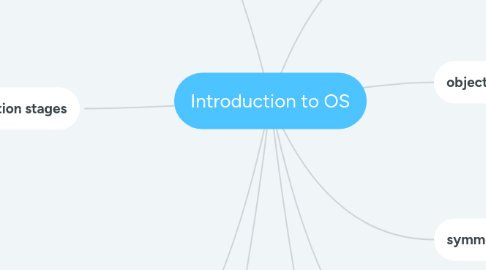
1. evolution reason
1.1. hardware upgrade
1.2. new types of hardware
1.3. new services
1.4. fixes
2. evolution stages
2.1. 1) serial processing
2.1.1. problems
2.1.1.1. scheduling
2.1.1.2. setup time
2.1.2. no os
2.1.3. access using 'series'
2.2. 2) simple batch systems
2.2.1. no direct access to processor
2.2.2. computer operator
2.2.3. monitor give control
2.2.3.1. processor executes
2.3. 3) multi-programmed batch system
2.3.1. maximize processor use
2.3.2. job kept in memory
2.3.2.1. CPU multiplexed among them
2.4. 4) time-sharing system
2.4.1. handle multiple interactive jobs
2.4.2. processor time shared
2.4.3. minimize response time
3. parallel systems
3.1. multiprocessor
3.1.1. close communication
3.2. tightly coupled system
3.3. advantages
3.3.1. throughput increased
3.3.2. economical
3.3.3. reliability increased
4. distributed systems
4.1. loosely coupled system
4.2. advantages
4.2.1. resources sharing
4.2.2. computation speed up
4.2.3. reliability
5. a program
5.1. control execution of application software
5.2. interface between hardware & application
6. objectives
6.1. convenience
6.2. efficient
6.3. ability to evolve
7. symmetric processing
7.1. processes run in parallel
7.2. processors
7.2.1. share main memory & i/o facilities
7.2.2. can perform same functions
7.3. os
7.3.1. scheduling
8. asymmetric processing
8.1. processor
8.1.1. each assigned specific task
8.1.2. master
8.1.3. slave
9. real-time systems
9.1. correctness
9.1.1. logical result
9.1.2. time
9.2. hard-real time task
9.3. soft-real time task
9.4. characteristics
9.4.1. determinism
9.4.2. responsiveness
9.4.3. reliability
9.4.4. fail-oft operation

